Where Is the Starter on a 2005 Honda Accord
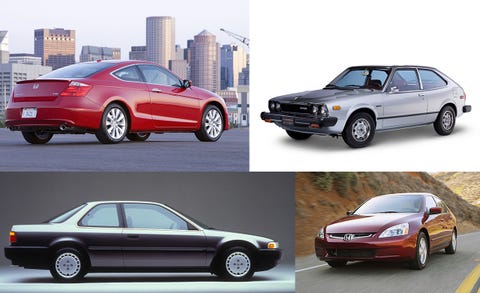
Honda's Accord is an automotive powerhouse, generating annual sales that eclipse those of entire brands and continuously winning us over with its tidy driving dynamics, space-efficient interior, and rock-solid dependability. We have named the Accord to our 10Best Cars list more times than any other model since we started awarding the accolade in 1983, and in that time, the Honda also has won an numerous comparison tests. Although its excellence has been a constant, the Accord has changed a lot over four decades. So see how the model developed, in pictures (with a few facts thrown in):
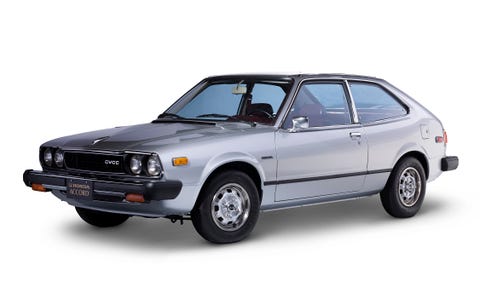
1 of 18
First Generation, 1976–1981
The reign of one of America's top-selling cars began inauspiciously enough. In 1976, Honda's first Accord was a somewhat dumpy-looking two-door hatchback. The brand's premium model line, above the tiny Civic, it was powered by Honda's second-generation, 68-hp 1.6-liter CVCC four-cylinder engine, so it was fuel-efficient—a key selling point during the oil crises of the 1970s.
Today, the Accord misses the EPA's "large car" size category by only one cubic foot (as determined by interior volume), and the sedan model measures 192.5 inches in length. The original '77 Accord hatch, by contrast, was just 162.8 inches long—or roughly the size of a modern Ford Fiesta. Honda added a second body style, a four-door sedan, for the 1979 model year. First-year sales totaled slightly more than 18,000 units, but demand grew rapidly, to the point that by annual sales reached 195,524 in 1982, just before the second-generation model debuted.
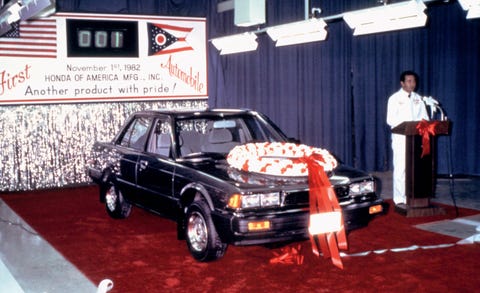
2 of 18
Second Generation, 1982–1985
Besides growing in size, the second-generation Accord is noteworthy for being assembled in the United States (the sedan model only), at a brand-new factory in Marysville, Ohio. It would be the first Japanese car built in America. Engine output remained weak by today's standards, although bumps in the four-cylinder engine's displacement eventually resulted in 86 horsepower by 1984. Honda introduced the sporty Accord SEi in '85 with fuel injection and a ragin' 101 ponies under its hood.

3 of 18
Second Generation, 1982–1985
Again, the Accord was available in sedan and hatchback forms. Both were boxier in style, just in time for the '80s. This Accord also earned a spot on our inaugural 10Best Cars list in 1983. It would go on to become the winningest car in the award's history.
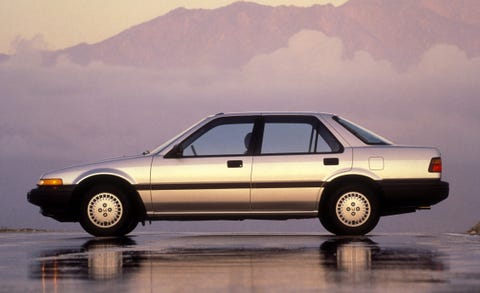
4 of 18
Third Generation, 1986–1989
With its third generation, the Accord again grew in size, and it added a third model to its U.S. range. In addition to the redesigned sedan and hatchback, Honda added a slick coupe model for 1988 that was spurred by its U.S. research-and-development team. Initially, a 98-hp carbureted 2.0-liter four-cylinder was standard, and a fuel-injected version making 110 horsepower was available.
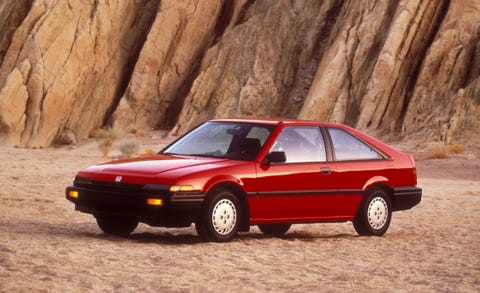
5 of 18
Third Generation, 1986–1989
These Accords were perhaps Honda's most daringly styled, with their bladelike side profiles and ultrasweet pop-up headlights. The cars drove as sporty as they looked, with four-corner double-wishbone suspensions, a first for Honda. We loved the Accord, of course, and named it to our 10Best Cars list. Again.
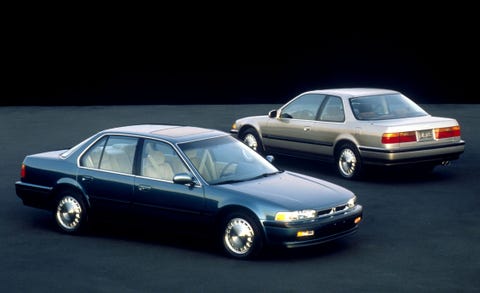
6 of 18
Fourth Generation, 1990–1993
Designwise, the fourth-generation Accord built on the third-gen model's basic aesthetic—a low beltline, clean flanks, and an airy, well-proportioned roofline—but ditched the cool pop-up headlights for fixed units. In Honda-speak, the new Accords were "lower, wider, roomier, more powerful, and have a contemporary, international look." For the first time, the Accord qualified for a mid-size classification.
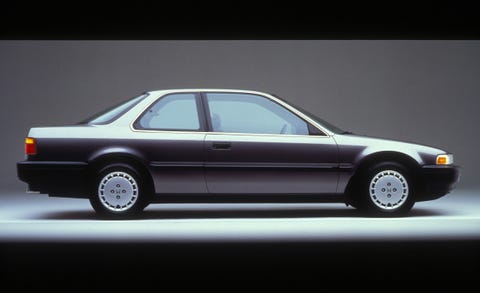
7 of 18
Fourth Generation, 1990–1993
The Accord family again consisted of the stalwart sedan, a coupe, and, instead of the hatchback, a station wagon designed in the States. And once again, the Accord made its way onto our 10Best Cars list immediately. A 125-hp 2.2-liter SOHC four-cylinder was standard (a 130-hp version of the same engine graced the top-of-the-line EX trim), with the choice of a five-speed manual transmission or a four-speed automatic.
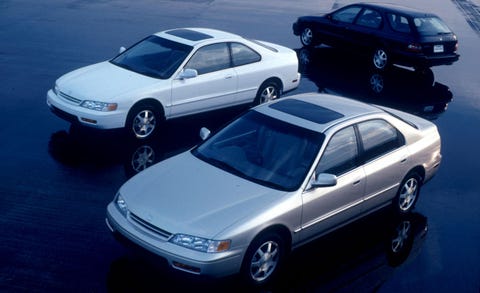
8 of 18
Fifth Generation, 1994–1997
Honda managed to stuff two Accord milestones into this generation. The first was variable valve timing and lift (better known to Honda fans as VTEC) for the 2.2-liter four-cylinder engine and, later, a V-6 joined the lineup for the first time.
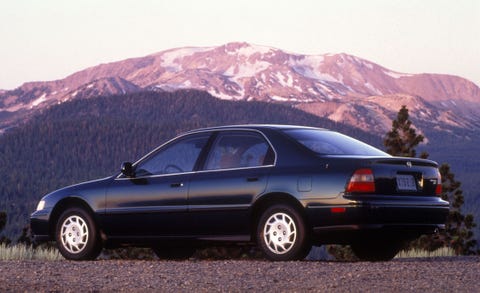
9 of 18
Fifth Generation, 1994–1997
The Accord family once again consisted of a sedan, coupe, and a wagon. Six-cylinder models are distinguished by their slightly restyled snouts relative to four-cylinder Accords.

10 of 18
Sixth Generation, 1998–2002
The Accord wagon died with the fifth-generation Accord, leaving behind the coupe and sedan body styles that continue to this day. Pour one out for the station wagon, then consider how much better the '98 Accord was than its predecessor. A larger, more powerful 135-hp 2.3-liter four-cylinder replaced the old 2.2-liter unit as the base engine, while a 200-hp 3.0-liter V-6 took over for the previous-generation's optional 2.7-liter six.
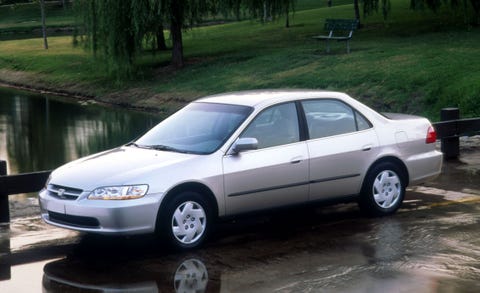
11 of 18
Sixth Generation, 1998–2002
And, wouldn't you know it, the new Accord earned a spot on our 1998 10Best Cars list. Bet you didn't see that coming.

12 of 18
Seventh Generation, 2003–2007
For the seventh-generation Accord, Honda again upped the outputs of the sedan's four- and six-cylinder engines. Base models boasted 160 horsepower from a 2.4-liter four, while the optional V-6 brought 240 horsepower to the party. For the first time, Honda paired the V-6 with a six-speed manual transmission in the coupe.
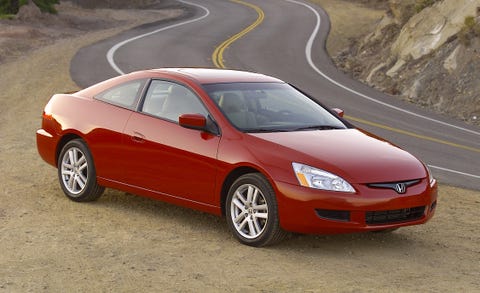
13 of 18
Seventh Generation, 2003–2007
Honda took its first crack at a hybridized Accord in 2005, although the model somewhat missed the mark. Instead of a miserly four-cylinder engine mated to an electric motor, the hybrid Accord combined a 3.0-liter V-6 engine with an electric motor to produce 253 horsepower—the most in the Accord range. Fuel economy was only so-so, but the Accord hybrid proved fun to drive.

14 of 18
Eighth Generation, 2008–2012
Another growth spurt pushed the Accord into the EPA's large-car size category. A coupe and sedan were again available, and the two are more stylistically differentiated than before. The coupe in particular was rakish and aggressive-looking, with a neo-fastback design and an available 268-hp V-6 that, again, could be linked to a six-speed manual.
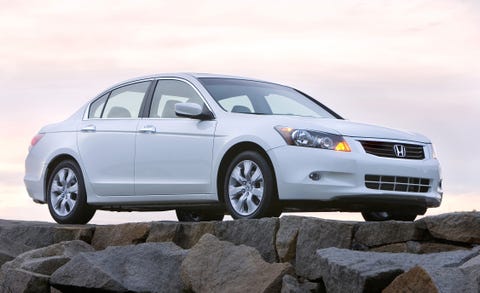
15 of 18
Eighth Generation, 2008–2012
And, yes, the Accord again has a chair reserved at the 10Best Cars table, which it casually slid into in 2008.

16 of 18
Ninth Generation, 2013–2017
Although it was referred to as the ninth-generation Accord, this model was really just a heavy refresh of the eighth-generation car. A new Sport model of the sedan had a 4-hp bump over other four-cylinder Accords, dual exhaust outlets, sporty wheels, and a standard six-speed manual transmission for $25,000.

17 of 18
Ninth Generation, 2013–2017
The hybrid returned, went away again, and re-returned, this time with a four-cylinder engine and an EPA rating of 48 mpg. It wasn't so fun to drive. The rest of the lineup, however, remained on our 10Best Cars list.
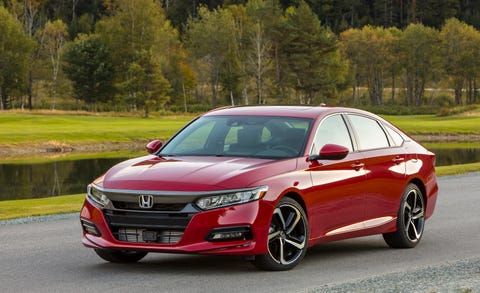
18 of 18
10th Generation, 2018–present
The big news is that the coupe body style and the V-6 engine option have disappeared from the lineup. A pair of turbocharged four-cylinder engines, a 1.5-liter with 192 horsepower and a 2.0-liter with 252 horsepower, bring forced induction to the U.S.-market Accord for the first time, and the hybrid returns with an estimated 50 mpg combined. A more rakish, almost fastback-like greenhouse for the sedan lends a bit more style to perhaps help ease the pain of the two-door Accord's demise.
Where Is the Starter on a 2005 Honda Accord
Source: https://www.caranddriver.com/features/g15087327/hondas-accord-a-visual-history-of-the-best-selling-model-since-its-birth-in-1976/
0 Response to "Where Is the Starter on a 2005 Honda Accord"
Post a Comment